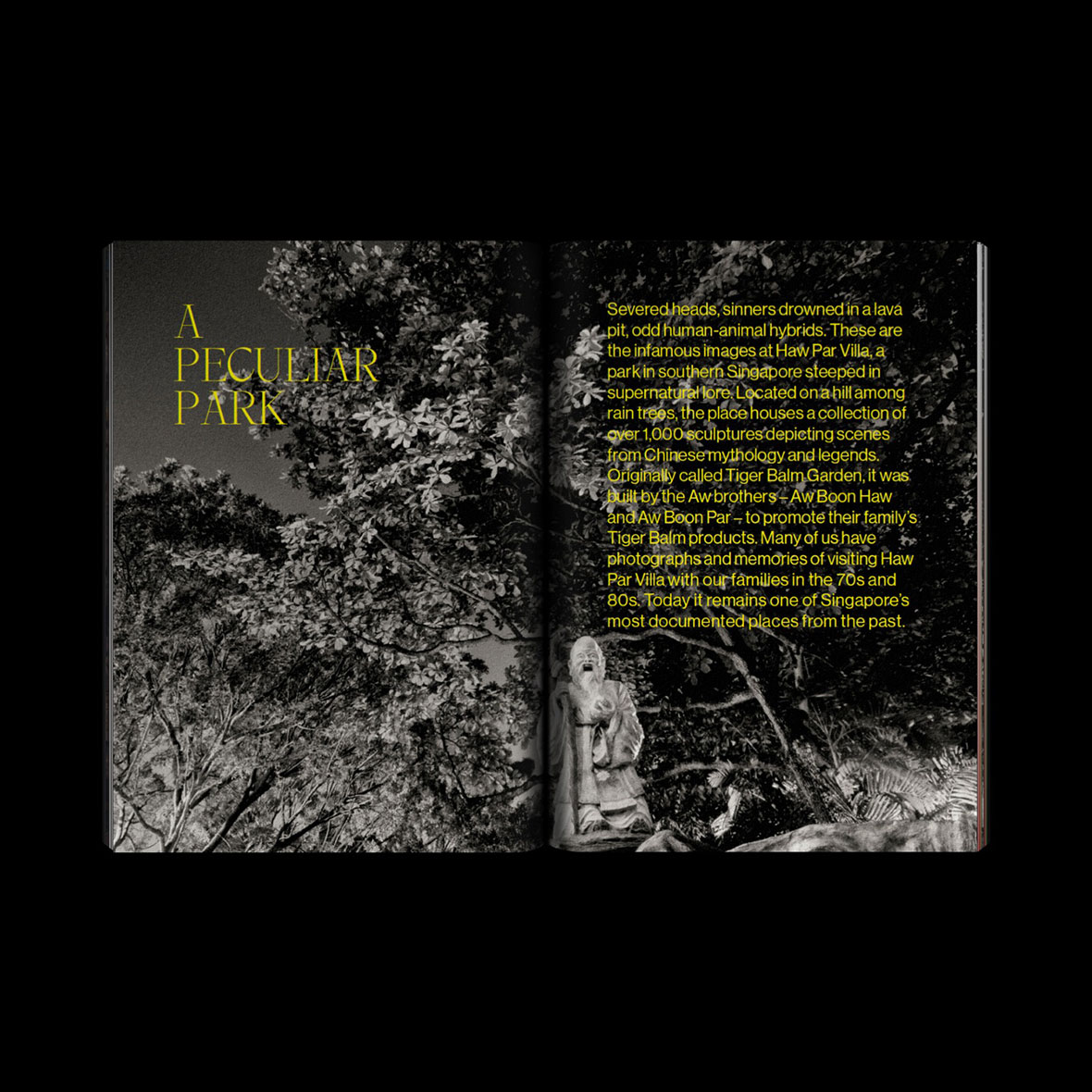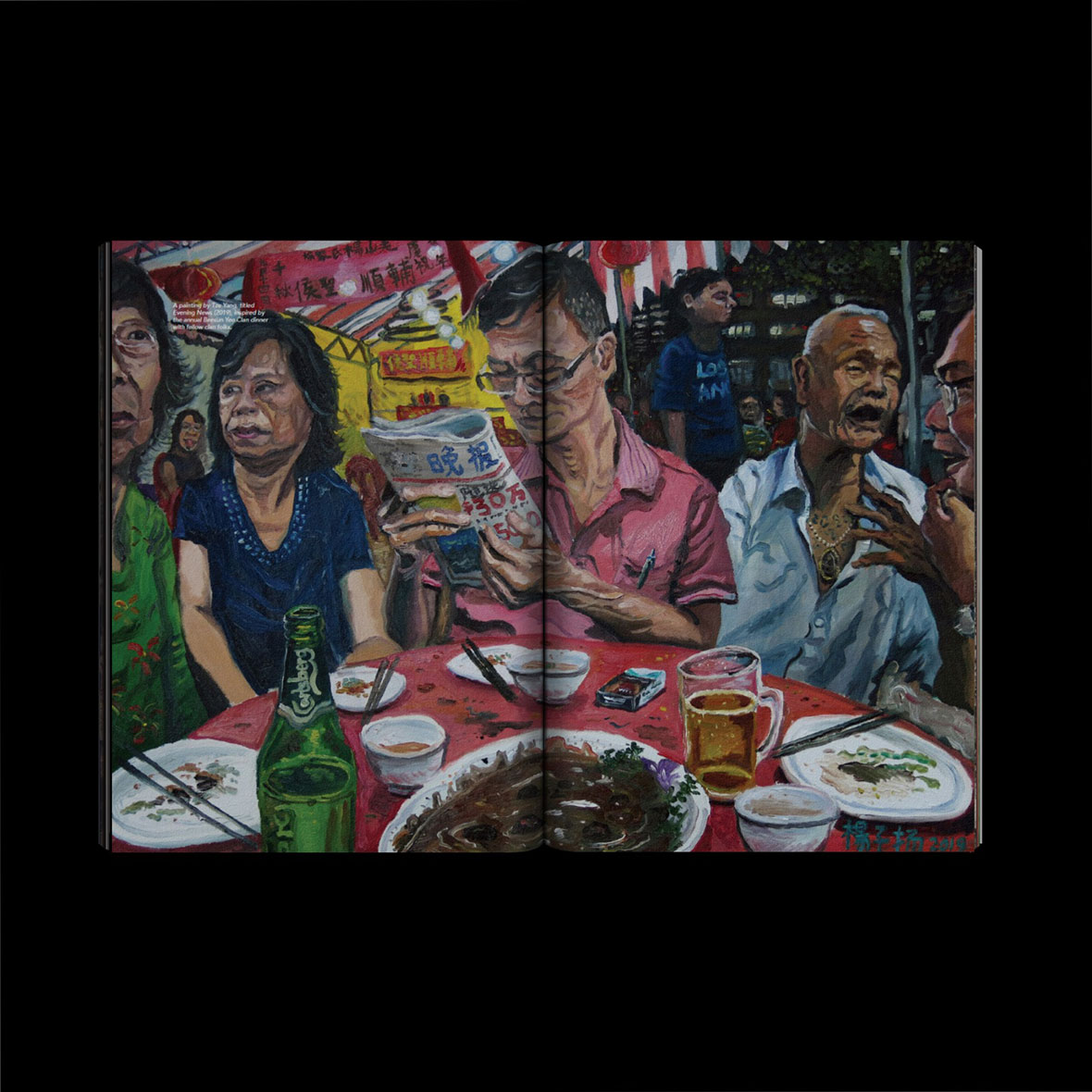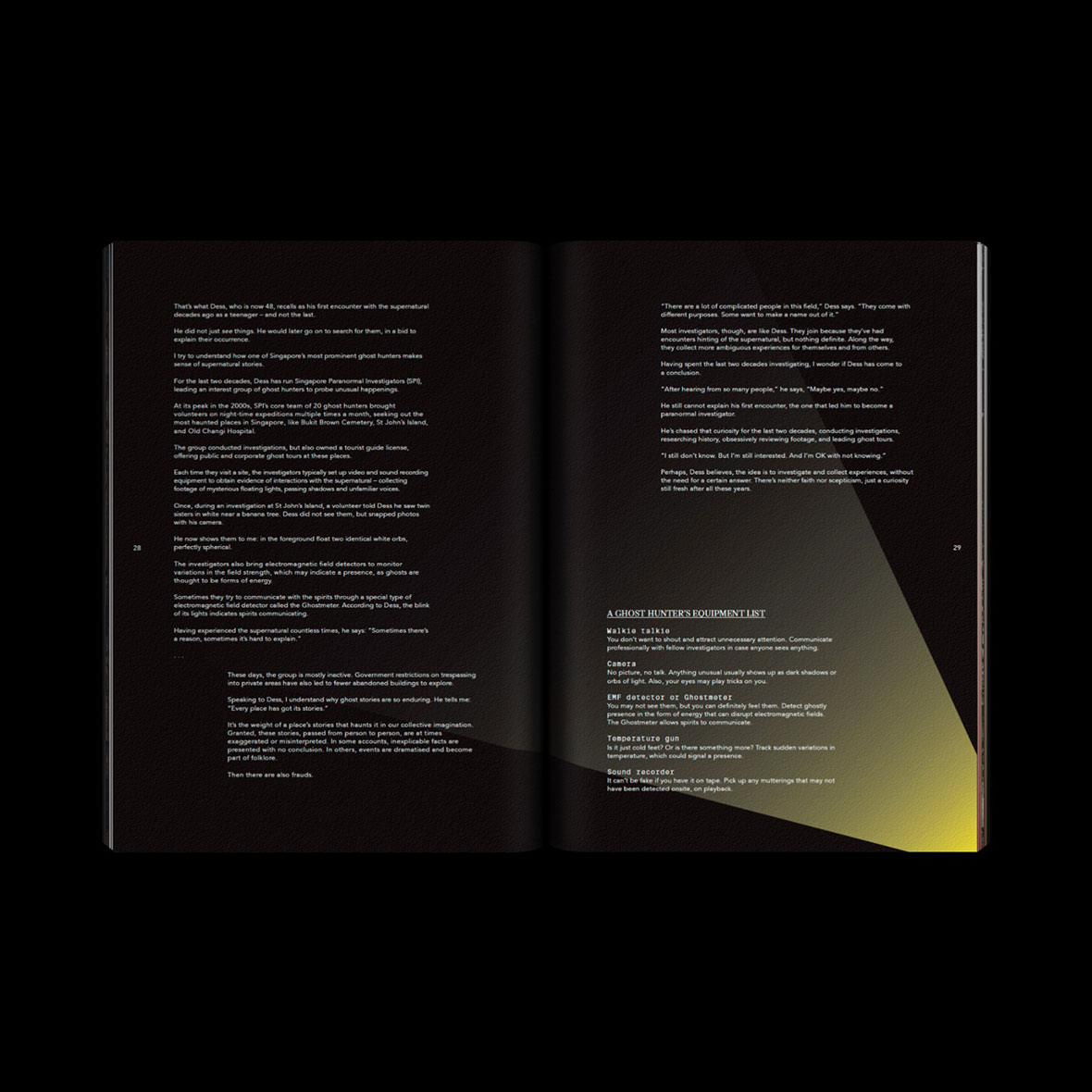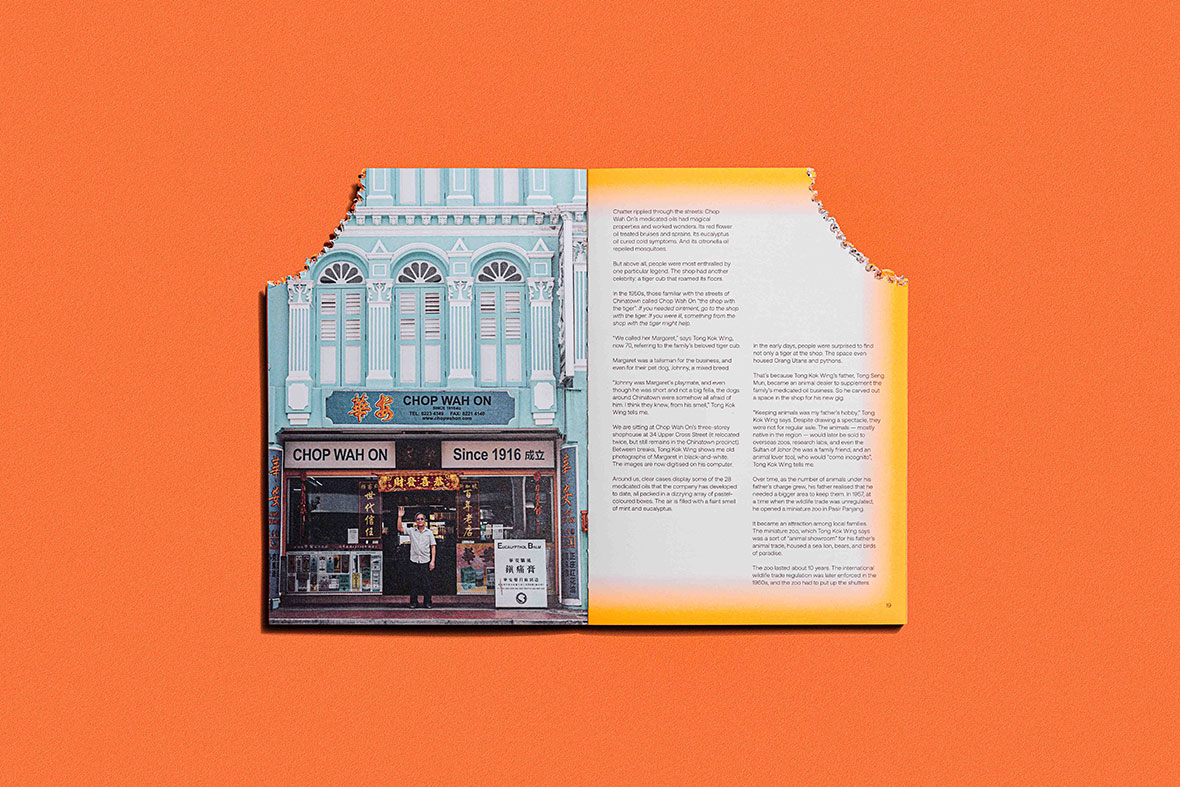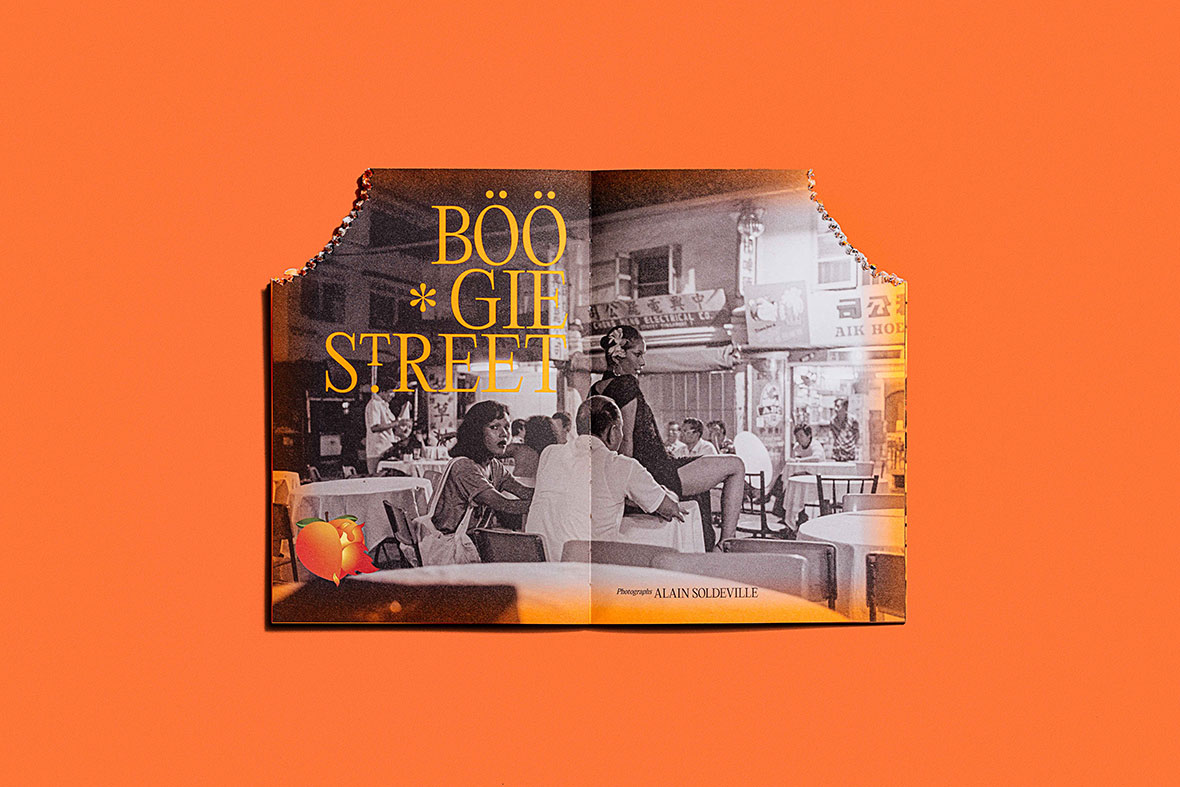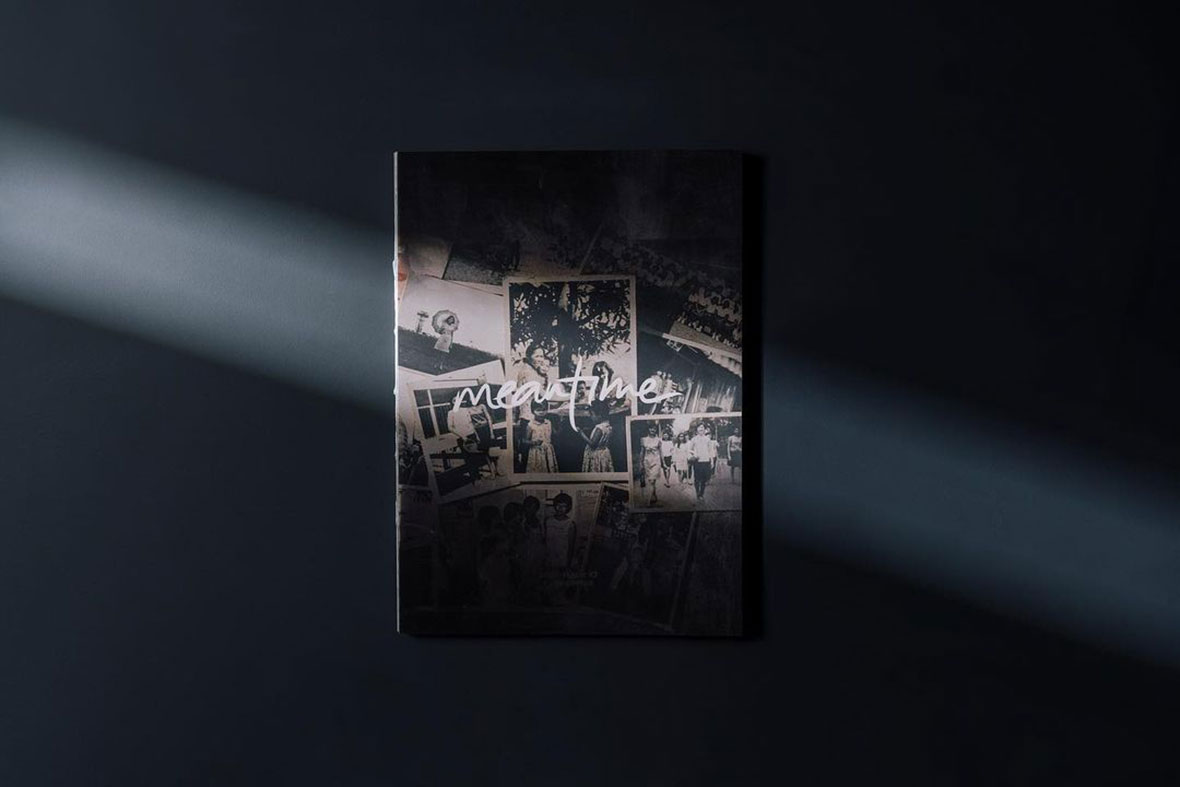
Pang Xue Qiang wanted to create a passion project before graduating from university and starting his full-time job. He pitched this vague idea to his friends—who were studying journalism, design, and photography—and they were immediately all on board. Considering their shared interest in print media, Qiang suggested, “why not a zine?”
It was imagined as a one-off project where they would write the stories themselves, design the layout, and scout for distributors to sell their zine. They met their goals, but it didn’t quite end up as a one-off issue. Two years and three issues later, Meantime Magazine continues to document Singapore stories lost to time.
早在大学毕业开始工作之前,Pang Xue Qiang 便希望做一个纯粹出于热爱的项目。他把想法告诉新闻、设计和摄影专业朋友,所有人当下一拍即合,决定 “做一本杂志!”
起初,团队仅把这本杂志当作一次“快闪”性质的项目,其内容全部由他们自己编写、排版并找分销商兜售。然而,在完成第一本杂志的制作后,他们却并未停下脚步,并在接下来的两年内发行三期。现在,《与此同时》(Meantime)杂志仍在继续,记录着新加坡那些迷失在岁月里的故事。
Now an annual publication, Meantime Magazine publishes interviews of Singapore locals who are open to sharing their past, traumatic and joyful times included. Qiang sees the magazine as an archivist, documenting memories of Singapore by focusing on personal stories. He says that whenever the editorial team approaches the interviewees, they are often surprised and ask them why the team is even interested in what they have to tell.
“They don’t see themselves as the protagonists,” Qiang says. “Nobody has given them the time and platform to voice their stories. If Meantime doesn’t exist, we feel that people will just go on with their lives and let these stories disappear because nobody will pay attention to them anymore.” Qiang hopes that decades down the road, people can rediscover Meantime —pick up a copy somehow in a library, someone’s home, or at a vintage magazine shop—and reminisce about what Singapore was like in the past.
《Meantime》是一本年刊杂志。杂志的报道对象都是新加坡当地人,讲述他们过去里喜怒哀乐的故事。Pang Xue Qiang 将这本杂志视为一份档案,透过个体的故事,记述新加坡的历史。他说,每当编辑团队联系受访者时,对方往往都会很意外,并问编辑团队为什么会对他们的故事感兴趣。
Pang Xue Qiang 说:“这些平凡的人从不认为自己是主角。生活在继续,但却没有专门的人去记录,这些故事最终会随时间烟消云散。”Pang Xue Qiang 希望,也许几十年后,会有人在图书馆、储物柜或是古董杂志店里发现《Meantime》,追忆起普通新加坡人的过去。

For its first issue, the editorial team found inspiration from the New York Times “Modern Love” column, which told stories about relationships, feelings, revelations, and betrayals. “We felt connected to these love stories, even the ones that happened in New York City where we’ve never been,” he says. The personal revelations of the readers to their co-readers form a sense of community that Qiang wanted to recreate. He thinks that love stories are universal and that everyone has their own story about love. “We thought if we could look at Singapore, which is a small country that people might not even pinpoint where it is on the map, and talk about the love stories of those living there, we could create a space people could connect with. That was how the first issue, ‘Love Stories,’ came about,” he says.
Qiang notes that their team’s editorial process meanders. There’s no specific theme directing the content, but each issue always has an anchor story that guides the team on what stories and photos to include. For the “Love Stories” issue, the anchor is a story about a photo studio along Kerbau Road where young men from Tamil Nadu and Sri Lanka have their portraits taken. The studio prints their pictures, and the men send them to their hometowns via post in the hopes of finding a bride.
“In Singapore, we have foreign workers from India, Bangladesh, and Sri Lanka who work in construction. We see them every day and meet them on the streets, but we don’t know their stories. When we found this photo studio, it was very interesting for us that it takes pictures of our young foreign workers so they can send them to their families for an arranged marriage. We wanted to tell the studio and the clients’ stories as one,” says Qiang. The team was told that once the families receive the images, they would show their pictures to their relatives and friends, and share how their son now works in Singapore, young, earning, and ready for marriage. Once the families find the right fit for the bride, the arranged marriage begins.
杂志初刊的灵感来自《纽约时报》的“现代爱情(Modern Love)”专栏,探讨了人际关系、情绪和背叛等话题。“爱情故事能让人产生共鸣,这是人类共同的话题,”他说。从读者的角度出发做一本杂志,Pang Xue Qiang 想通过杂志建立一种人与人之间的社区感。他认为爱情故事更具普世性,“新加坡不大,人们甚至可能找不到它在地图上的位置。但我们觉得,通过讲述生活在这里的人们的爱情故事,或许我们可以创造一个让人们相互联系的空间。这就是我们初刊主题 ‘爱情故事’(Love Stories)的由来。”
然而,杂志内容的采编过程并不轻松。每期杂志首先会围绕既定主题编写出先导故事,然后再由团队围绕该故事进行延伸。初刊的先导故事讲述了当地加宝路(Kerbau Rd)一家照相馆——来自泰米尔纳德邦和斯里兰卡的年轻男子会在这里拍下肖像照,并邮寄回家乡用来相亲。
“新加坡有许多来自印度、孟加拉国和斯里兰卡的外籍劳工,在这里从事建筑业。每天都能在街上看到他们,但从来不知道他们的故事。当我们发现这个照相馆时,觉得特别有趣的是,年轻的外籍劳工会在这里拍摄照片,然后寄给家人来安排婚事。我们想将照相馆和顾客的故事结合起来讲述,”Pang Xue Qiang 说道。团队了解到,一些年轻男子的家人在收到照片后,会在亲朋好友之间奔走相告,告诉他们,儿子正在新加坡工作,年轻、有收入,已准备好结婚。一旦找到合适的新娘人选,就会安排结婚。“当人们谈论起爱情时,他们会变得脆弱、会变得敏感,这也能从侧面袒露出爱情的色彩”,Pang Xue Qiang 说道。
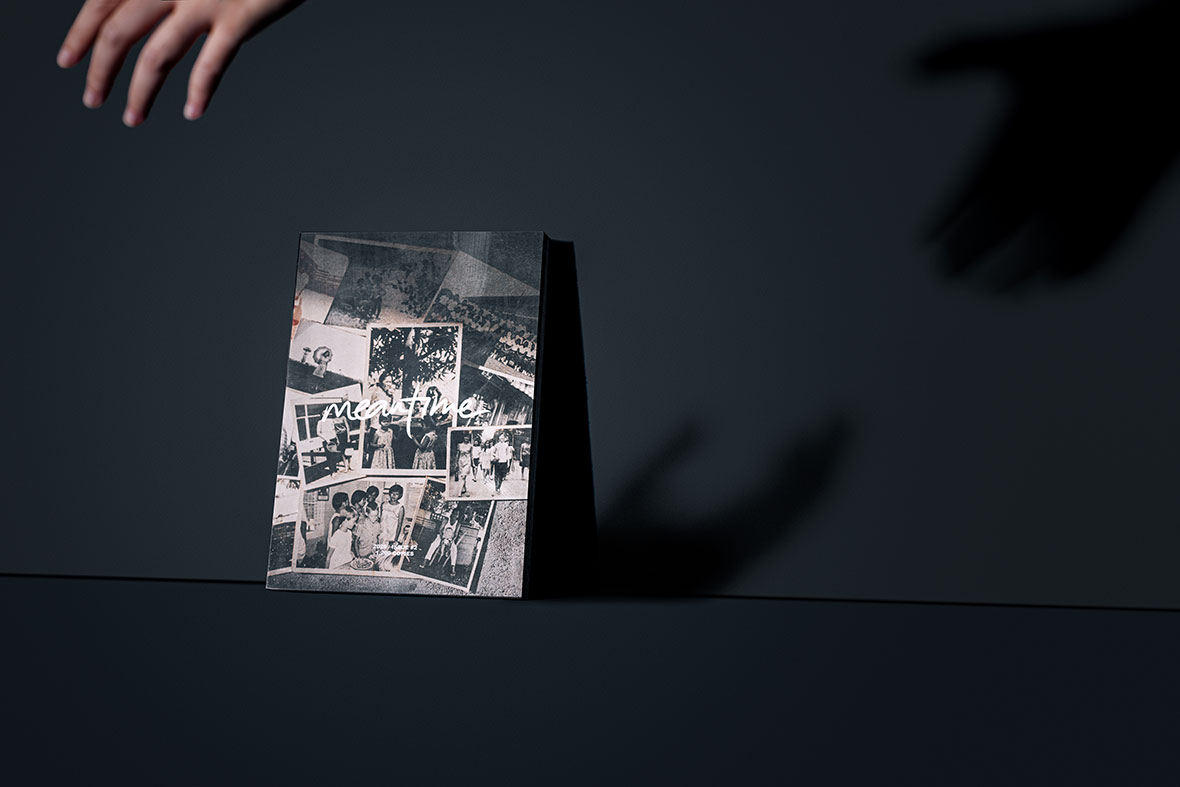
A pivot from the mellow tone of the “Love Stories,” the editorial team wanted to shift to something haunting and gripping. “After the first issue, we realized that when people talk about love stories, they become vulnerable as they relieve their pasts, showing the tragedies of love as well,” he says. “We were inspired by this, so we decided to make the second issue ‘Ghost Stories,’” says Qiang, who adds that ghost stories don’t always mean haunted houses and paranormal activities.
Qiang wrote the anchor story himself, a feature that remains dear to him. He looked into the death penalty for drug traffickers in Singapore and how the system worked. Instead of interviewing a legal expert to help him investigate the death penalty system in the country, Qiang spoke with a retired Catholic nun who worked as a death row counselor for drug traffickers and prisoners in jail. “For months, she would counsel the prisoners who were convicted or on trial then on their last day, she would walk them to the room where they would be hanged or face death,” he says.
继“爱情故事”的温柔过后,编辑团队希望转变调性,讲述奇情、且扣人心弦的故事,于是决定制作第二期“鬼故事”(Ghost Stories)主题杂志,其并不一定是关于鬼怪和超自然现象的故事,也囊括了许多猎奇的轶事。
这一期先导故事由 Pang Xue Qiang 亲自编写,讲述了新加坡毒贩死刑制度及其运作方式。编写过程中,Pang Xue Qiang 并没有向法律专家征求意见,而与和一名退休的天主教修女攀谈起来,这名修女曾担任毒贩和死刑犯的心理疏导员。“在为期几个月的工作中,她一直担任囚犯的心理辅导,陪他们走到生命的最后一间房间,”Pang Xue Qiang 说。

Qiang shifted the tone, once again, for the third issue. Smack dab in the middle of the pandemic, the editorial team found themselves locked in their own homes for months. “We didn’t want to do anything depressing after that,” says Qiang. They wanted to laugh again and share that contagious dose of happiness with their readers, so for the third issue, they focused on humor. Qiang seems to have reinvented the meaning of ‘funny stories.’ The third issue, “Funny Stories,” contains tales that don’t make the readers enjoy full-belly laughter. Instead, they might make them raise their eyebrows, wear a quizzical expression, or gasp in disbelief.
第三本杂志中,Pang Xue Qiang 再次改变风格。疫情期间,编辑团队被困在家中数月,“经历这些之后,我们不想再去讲一些令人沮丧的故事,”Pang Xue Qiang说。他们想再次放声大笑,并将这一份快乐与读者分享。第三期杂志内容以“滑稽故事”(Funny Stories)为主题,围绕幽默展开,其中内容并不会让读者捧腹大笑,反而是让他们摸不着头脑、无厘头,甚至是难以置信。
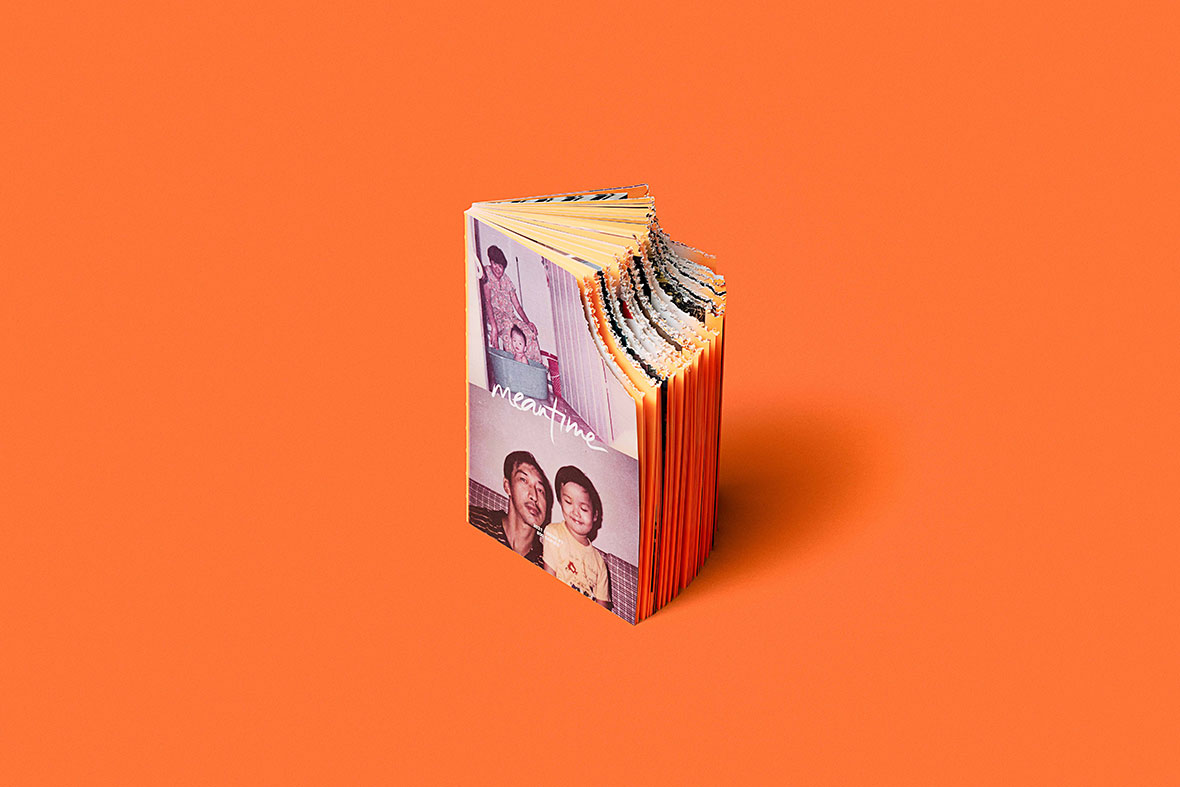
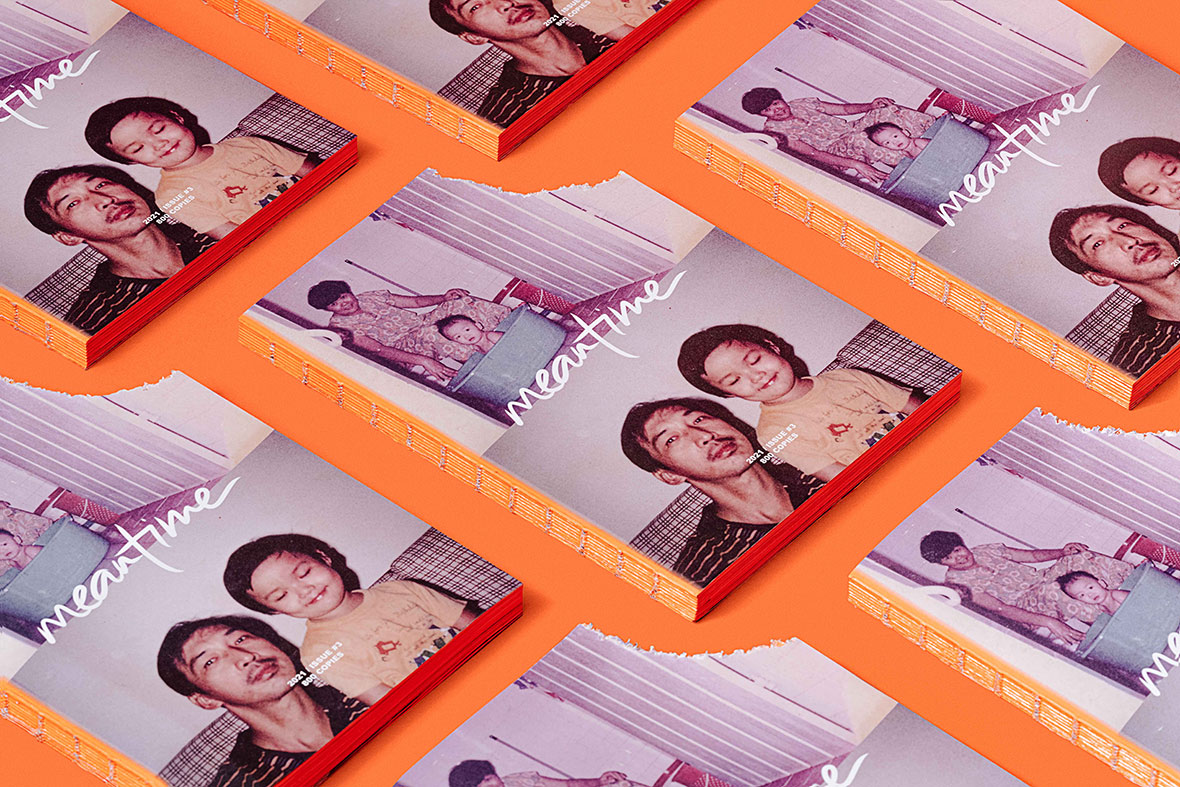
The anchor story is based on an anecdote about Singapore banning long hair for men in the 1970s. “It was called ‘Operation Snip Snip’ which was funny to us,” Qiang says. “We found out that Singapore didn’t want men to have long hair because, at the time, it was associated with drugs, low life, hippie culture, laziness, and not wanting to work hard. The government didn’t want to promote those values.” In present-day Singapore, Qiang and the editorial team scouted out men with long hair, and they were asked to recall their relationship dynamics with their fathers who lived through the ban.
这期先导故事讲述了新加坡在 1970 年代实行的禁止男性留长发的政策,Pang Xue Qiang 说:“政策被定名为‘ 剪刀行动’(Operation Snip Snip),光听就感觉很有意思。我们发现,新加坡之所以禁止男性留长发,是因为当时人们会将长发与毒品、不良生活、嬉皮士文化、懒惰和不想努力工作联系在一起,而政府不想助长这些风气。”于是,Pang Xue Qiang 和编辑团队在新加坡寻找留着长发的男子,听他们回忆起父辈的故事。

Surprises come but never go with every print issue of Meantime Magazine. The cover page of “Love Stories” is individually hand-torn to show the fragility of memories, and different copies have other surprises—some come with a paper boat, a pressed flower, or a pull-out love letter between the pages. The almost-black cover of “Ghost Stories” is temperature-sensitive and changes hue due to heat from the reader’s hands, the room they are in, or the weather, revealing images underneath the layer. For the recent issue, the upper right part of the whole print is chewed up, a prelude to the beguiling stories and photographs inside. “For every issue of Meantime, we try to have print designs and elements that push the boundaries of print. It’s a print magazine, after all. We hope to give reasons to our readers to buy the physical copies,” says Qiang.
每一期《Meantime》纸质杂志都会从外观、材质上带给读者惊喜。“爱情故事” 的封面由手工撕制而成,用来表达脆弱与回忆,而每本杂志又夹杂着不同的惊喜——纸船、压花或是可以拉出的情书。“鬼故事” 近乎全黑的封面采用热敏性材质,能根据读者双手的温度、室温或天气而变色,变色的同时,浮现封面和封底的图案。最新一期杂志的右上角像被咬掉,为杂志本身增添一抹无厘头、怪诞的气质。“对于每一期杂志而言,我们都想在设计和材质方面做出一些改变。毕竟,这是一本印刷杂志,我们希望给读者提供购买纸质杂志的理由,”Pang Xue Qiang 说。
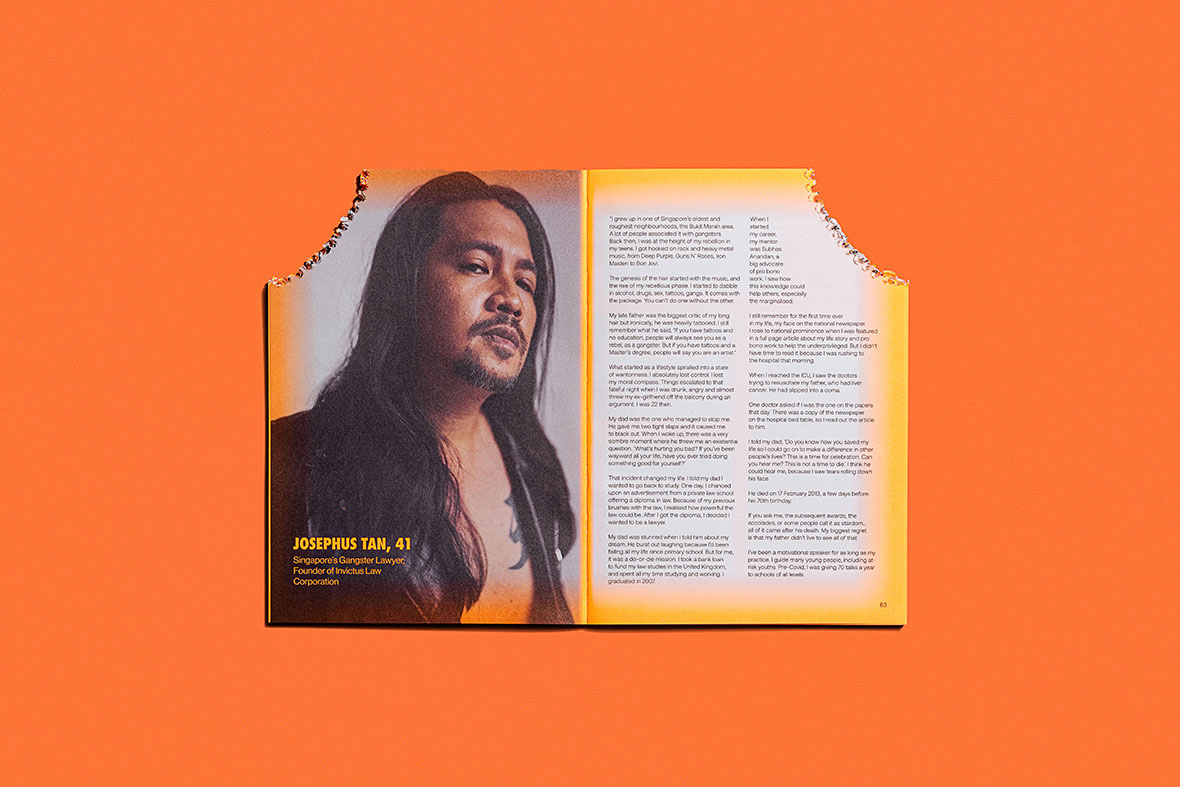

Before starting on the first issue, Qiang and the editorial team sat down to come up with the title of their magazine. They wanted to explore and tell stories about Singapore from its people, archives, and history. They looked first into the concepts of the passing of time and consistent memory. Qiang thought that time was ‘mean,’ seeing it as a malignant force that never stops and makes everyone and everything become forgotten as it moves forward. This thought culminated in the name of the publication.
“We were also fascinated with the phrase ‘in the meantime,’ as if it were a juncture that intervenes two periods, a pause or a break,” he laughs. “We wanted people to pause and read our stories, to take their time to savor them.”
Qiang reveals that they’re almost done with the fourth issue, but that’s the only bit of information he’s willing to share. Rest assured, Meantime Magazine won’t be short of distinct stories dedicated to preserving the untold narratives of Singapore and its inhabitants.
在初刊开始制作之前,Pang Xue Qiang 和编辑团队曾一起就杂志名深入谈论。他们想从新加坡人、档案和历史中探索和讲述有关新加坡的故事,并首先考虑了时间流逝和不变记忆的概念。Pang Xue Qiang 认为时间是“卑鄙的”,因为它就像一股永不停歇的洪流,随着它的流逝,冲淡一切人与事。而这最终也成为了杂志名字的由来。
“我们也很喜欢‘in the meantime’(与此同时)这个表达,感觉就像是介于两个时间段的连接点,是一个停顿或中断,”他笑着说,“我们希望人们能停下来读读我们的故事,花一点时间细细品味。”据他透露,《Meantime》的第四期已即将完成。他们将一如继往,记录着新加坡和新加坡人不为人知的故事。
Like our stories? Follow us on Facebook and Instagram.
Instagram: @meantime.zine
Contributor: Matthew Burgos
Chinese Translation: Olivia Li

